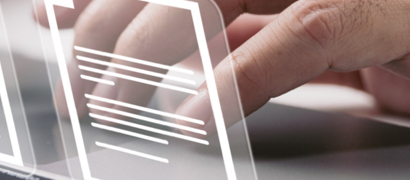
Guide to IntelliPen Upgrades
So you’re thinking about an upgrade? Here’s everything you need to know.
Why would you upgrade?
The only way to stay ahead of the pack is to get onto the newest version of the software. We’re adding lots of new features and improvements to the IntelliPen suite all the time. This can be anything from brand new functions like online ID checking, to security enhancements (e.g. Transport Layer Security (TLS) versions) and platform changes (e.g. Azure). Whether you want to improve your member experience or reduce your scheme admin costs, you’ll need to upgrade to make use of all the new stuff.
It’s worth saying that if you’re ‘upgrading’ from a version before 2.3, these take a lot more time to do and we call these a migration rather than an upgrade (but it’s still upgrading what you can do with IntelliPen).
Sometimes just upgrading doesn’t give you the new feature you’re after – it might be a client level development that we need to help you with once you get onto the new version. So in this case it’d be extra work afterwards. The release notes will help you understand whether this would be the case, but if you’re not sure, just ask your Client Manager.
How do I get upgraded?
- Tell us you’re interested in an upgrade by letting your Client Manager know.
- We’ll then give you a quote for doing the analysis – we have to work out how to apply new software to your instance, and sometimes there’s a lot of customisation to work around. The quote will also give you a rough idea of how long it’ll take.
- Once you’ve agreed the quote, we’ll sit down with you and talk about some initial details (key contacts etc.) and answer any questions you’ve got.
- We’ll take a copy of your databases and sites, so we’ve got a baseline for the upgrade analysis, development, and internal testing.
- Then we’ll do the analysis, and this’ll tell us how big/complex the upgrade will be. When it’s done, you’ll have the scope of what needs to happen to get you upgraded, and how much it’ll be.
- If you’re happy to go ahead, we’ll get cracking with the upgrade in one of our development environments and then move to a test environment to check it works okay.
- Once our test team have given it a thorough going over and have had any defects dealt with, we’ll deploy it to your test environment so you can check it too (User Acceptance Testing – UAT). Your warranty period starts from this point, so we’ll be on standby to fix issues that you find.
- At this point you’ll be able to do any development you wanted to do yourselves.
- The final stage is to move it to your production system so you can start enjoying the benefits of your new pension admin software.
How long does it take?
How long is a piece of string? Seriously, all our clients are different and use the software differently, so we won’t know for sure until we’ve done the analysis. It could be anything from two months to twelve months.
This document is confidential and intended solely for the use of the intended recipient(s). Please do not copy, print or duplicate this document or disclose its contents to anyone. If you are not the intended recipient(s) of this document and its attachments, you must take no action based upon them, nor must you copy or show them to anyone. Please contact the sender(s) immediately if you believe you have received this correspondence in error.
A flavour of the sorts of things that could add more time to the upgrade process are where your IntelliPen system:
- …is old. Typically, the older the system the more work there is to do
- …contains more client-specific elements (e.g. the client schema of the database plus the client resources, but it also includes things stored in the database like workflow processes)
- …has a variety of schemes, wizards, workflows, etc.
- …has client-specific external utilities (i.e. something you’re using that’s not IntelliPen like something to reformat files)
- …has a member-site (or similar) configured alongside
Our time on the upgrade can be reduced if the scope of our work doesn’t include some of the above items, but if you’re doing some of them yourself, they’ll still appear on the overall timeline.
The total time it takes to upgrade will be less if you’re quick do the things that sit with you like making decisions in the analysis phase and UAT, and agreeing when software can be deployed.
We’re always looking for ways to speed things up – time is money after all- and while automation helps to do this, we can’t overstate the importance of working with our experts to get the quality you and your members’ demand.
How much does it cost?
Typically 15-20% of the total effort (and therefore cost) is in the analysis phase. But it can vary.
Our core product’s already been developed. What we’re talking about here is what we need to do to integrate it into your system. The more customised your software, the longer it takes to upgrade and therefore the more expensive it’ll be.
What version will I get?
We’ll talk to you in the analysis phase about what the newest version available to you is. If there’s a feature you must have and it’s in the next release, it might be better to wait until that’s available.
When can it happen?
We have upgrade slots to fit you into. When someone confirms they want to go ahead with an upgrade the slot is allocated and it gets taken off the table. So if you want an upgrade let your Client Manager know and they’ll see which slots we have in the timescales you’re after. Remember, at the start we’re really only talking about when the analysis can happen because everything else after that is unknown until the analysis is done.
We’re in this together though. You need to be ready with a few things too and then we can agree a slot together. Some of the things that make you ready to start the process are:
- Your system needs to be stable i.e. there’s no development planned during the upgrade period (by either Procentia or you). This is because we can’t work on upgrading things that don’t exist in the system yet.
- The upgrade needs to avoid major events like scheme changes or payroll year-end, so that we avoid a conflict in priorities and the likelihood of development being needed during the upgrade process
- You’ll need to have people available to help answer questions that come up during the upgrade process, also importantly, to do UAT
I’ve read all this and still have questions…
Pick up the phone to your Client Manager and talk it through. Upgrading (or migrating) is a really important step in delivering your strategy and we both want your upgrade to be a success.
![[TBC] [TBC]](https://hub.procentia.com/wp-content/uploads/2023/03/header-logo.png)
![[TBC] [TBC]](https://hub.procentia.com/wp-content/uploads/2023/03/footer-procentia-logo.png)


